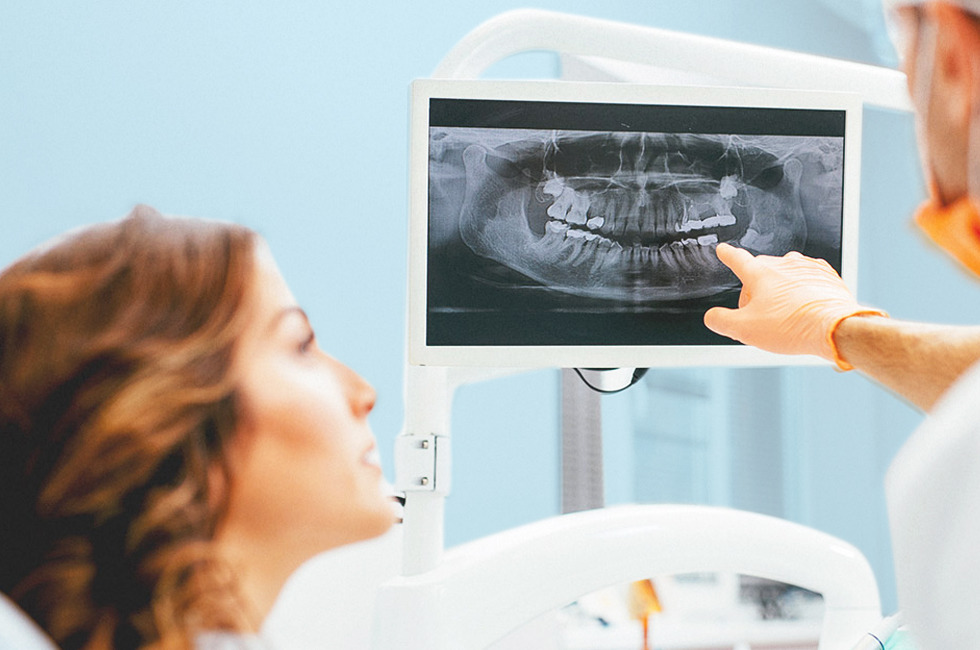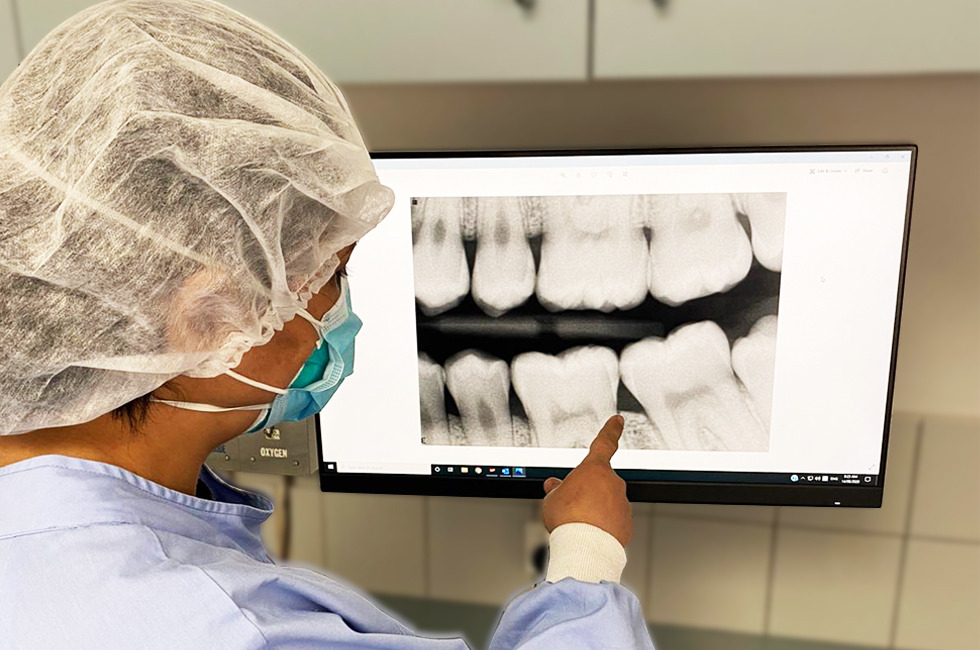Dental X-Rays (radiographs) are images of your teeth that we use to evaluate your oral health.
They can help us to detect trouble early on in your mouth, teeth, gums and jaw.
Treatment of dental disease before it gets serious can save you from pain and expensive treatment options.
X-rays can help find problems that cannot be seen with just a check-up.
There are two main types of intra-oral dental x-rays:
Bite-wing X-Rays : Show details of both upper and lower teeth on one side of the mouth. Each bitewing shows a tooth from its crown to the level of the supporting bone. It mainly detects decay between teeth and changes in the thickness of bone caused by gum disease. It can also show any breakdown of previous fillings. They should be done as part of a full check-up from time to time.
Periapical X-Rays : Periapical X-Rays, as the name suggests, are used to detect abnormalities around the apex of the root of the tooth and surrounding bone structure. It is the image that captures the whole tooth.
While Dental X-Rays do involve radiation, the exposed levels are so low that they are considered safe for children and adults.
A lead Apron is used to prevent any unnecessary radiation exposure to your vital organs.
Dental X-Rays during Pregnancy :
Make sure to tell us. During your pregnancy, you may need to have x-rays taken as part of your treatment plan for a dental disease. Dental care including dental X-Rays, are safe during pregnancy. Use of the leaded apron and thyroid collar will protect you and your foetus from radiation exposure. Dental X-rays also do not need to be delayed if you are trying to become pregnant or are breast feeding.
How much radiation is used in dental X Rays ?
The dentist will use only enough radiation to see what he or she needs to see. We all are exposed to small amounts of radiation daily from the sun, soil, rocks, buildings, air and water. This type of natural radiation is called background radiation. The radiation used in x-rays has been compared to the amount of background radiation a person gets daily.
To help you understand how much radiation you are getting during the x-ray exam.
| Radiation Source | Days of Background Radiation |
|---|---|
| Airline Passenger (4 hour flight) | 1 day |
| 2 Dental Bitewing X rays | 1 day |
| 1 Dental Panoramic X ray | 1 day |
| 1 Dental Cone Beam CT | 2-20 days |
| 1 Head CT | 243 days |
Digital radiography
This has replaced the traditional photographic x-rays. The difference in the digital and traditional x-rays is that we use digital phosphor plates for imaging which provide enhanced computer images of gums, teeth and other oral structures.
Benefits of digital radiography
The film is immediately processed and available to view whereas film takes time to be developed.
Less radiation is needed to produce the same quality image as film. Digital x-rays give 70% less exposure to radiation than conventional x-rays.
Schedule your dental X-Rays today
If you would like to book with us, please call Family Dentist at (03) 9798 4420, (03) 9798 4822. If you need to reach us after regular business hours, you can Book an appointment online or you can leave your name and number and we will get back to you.




